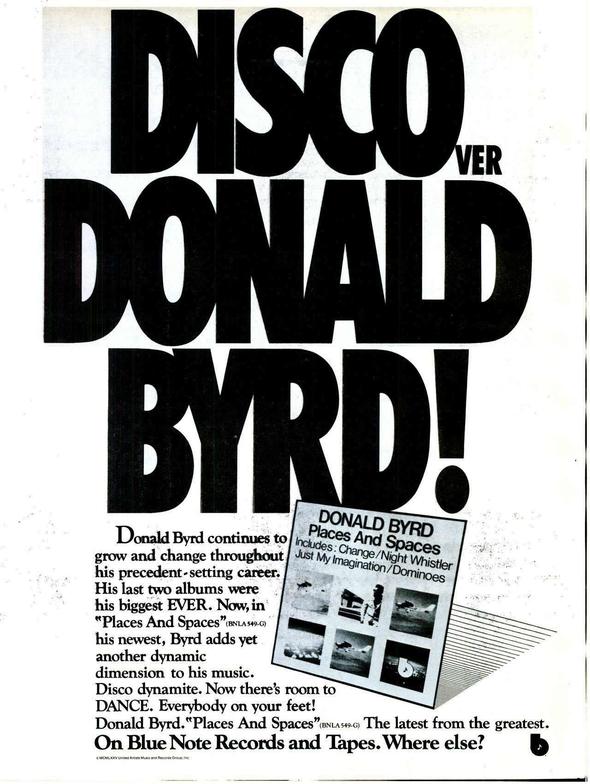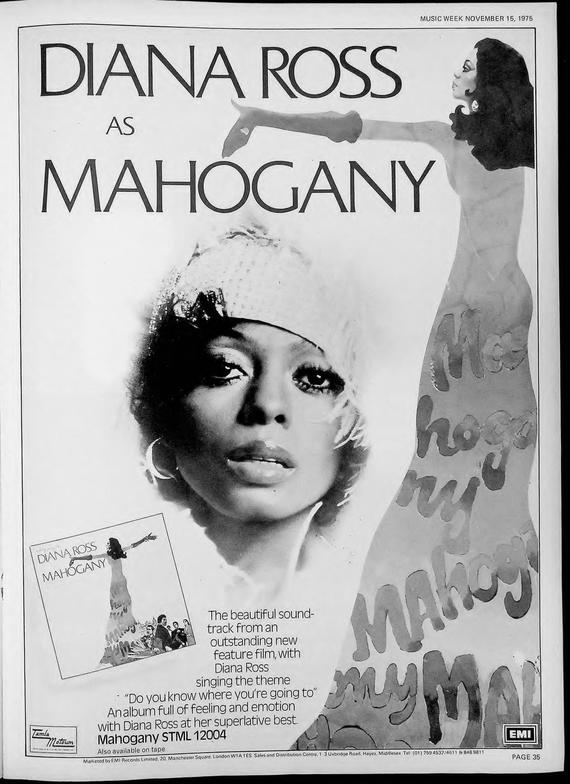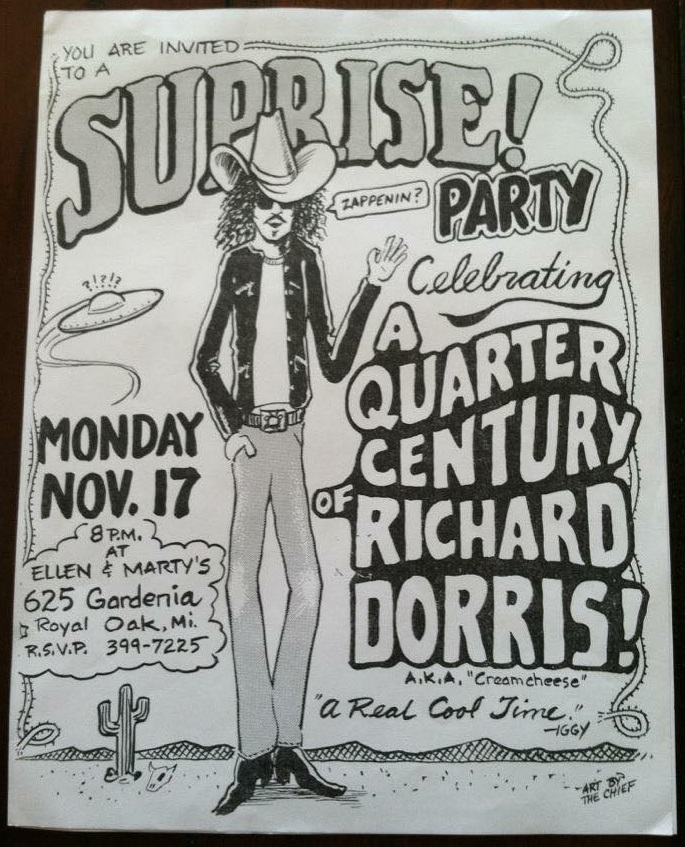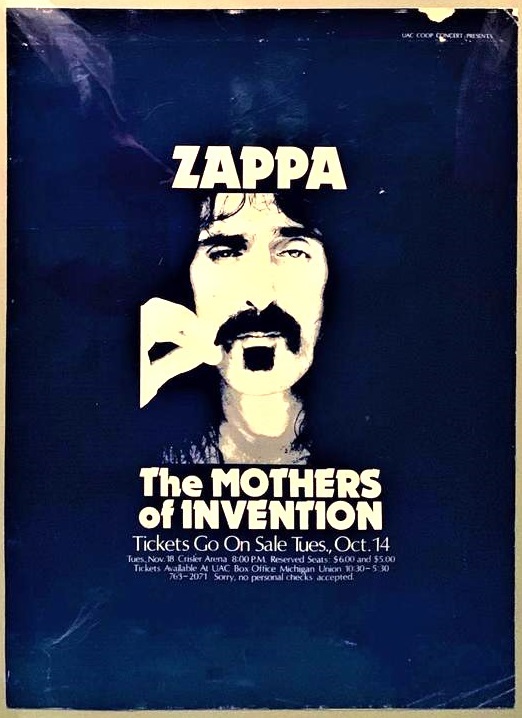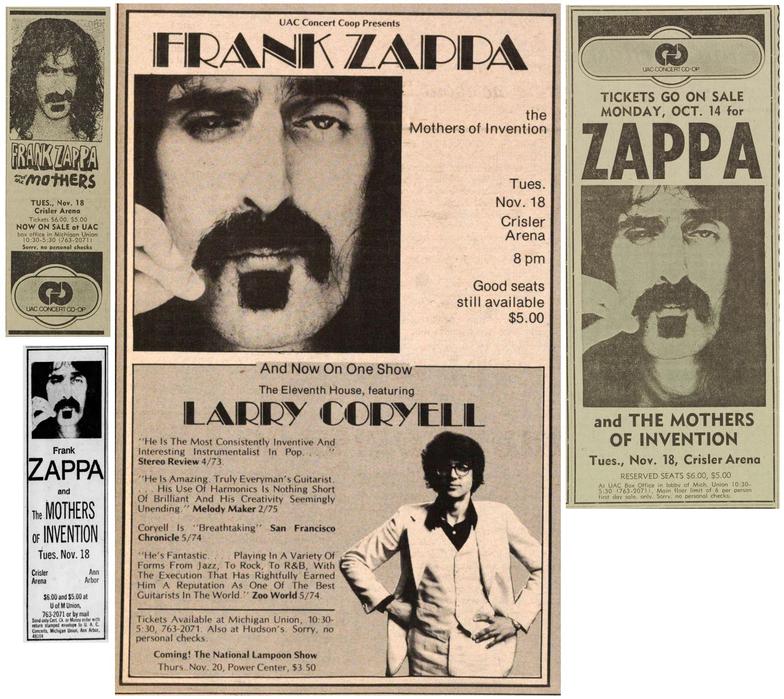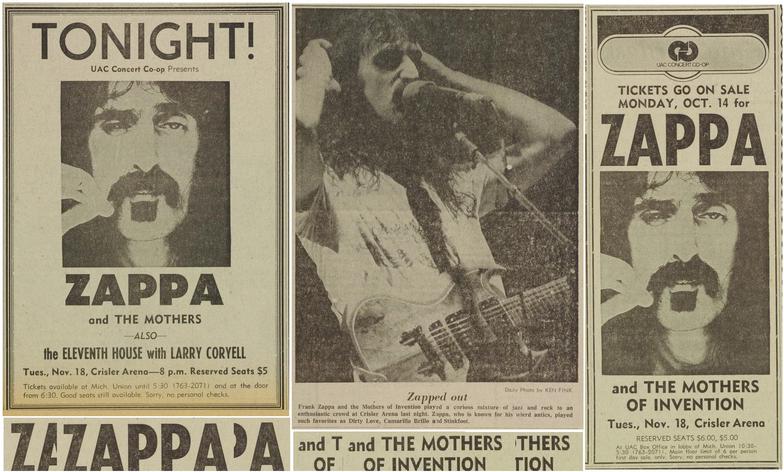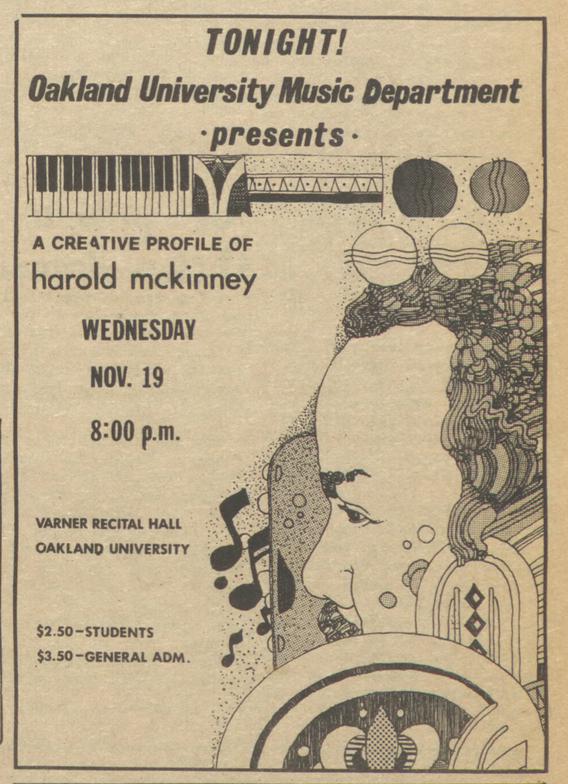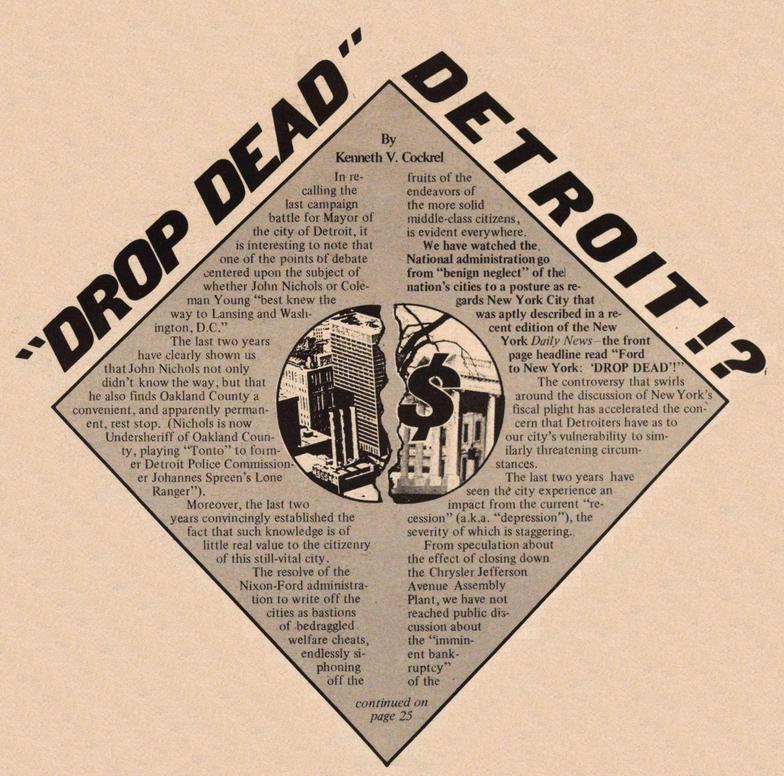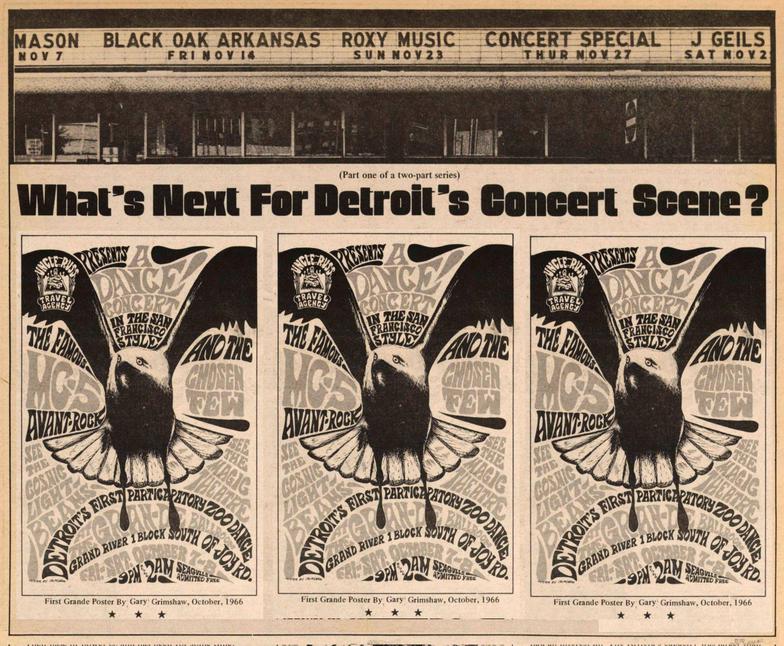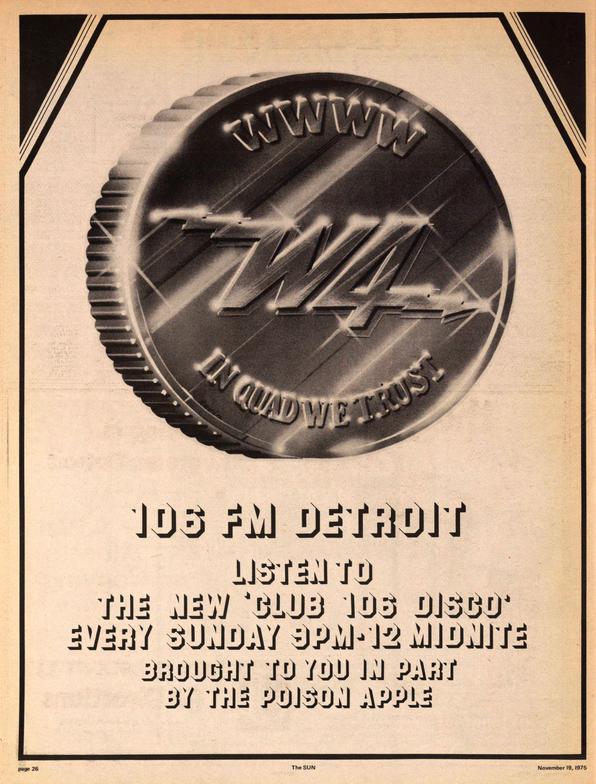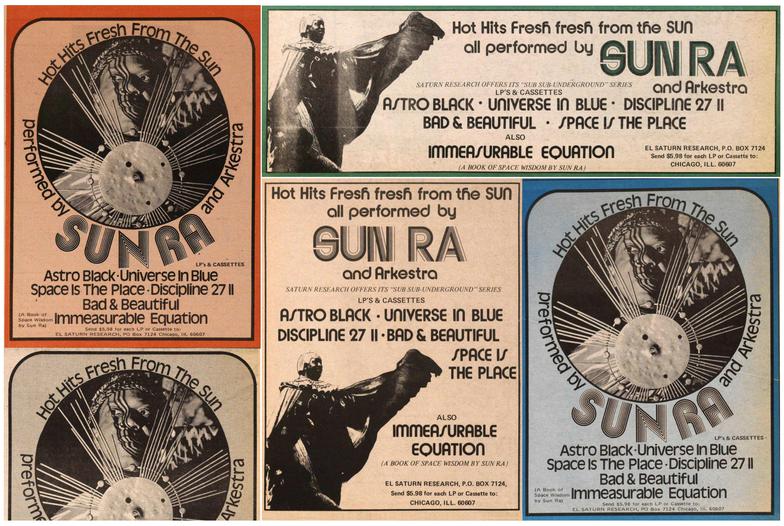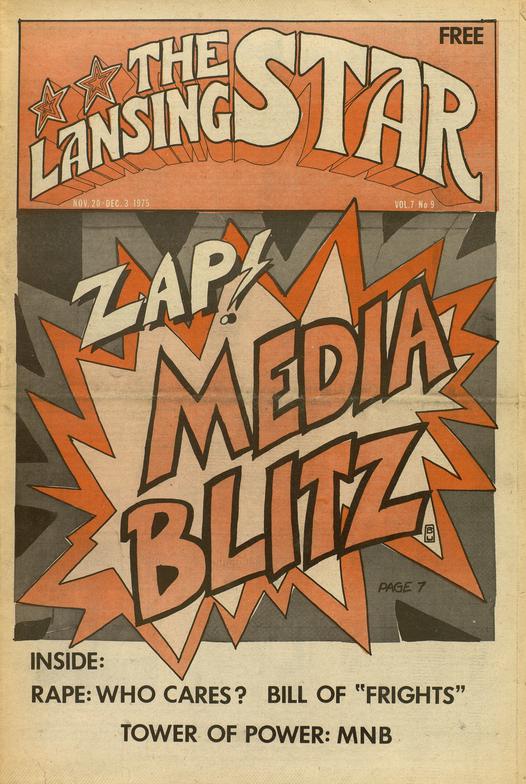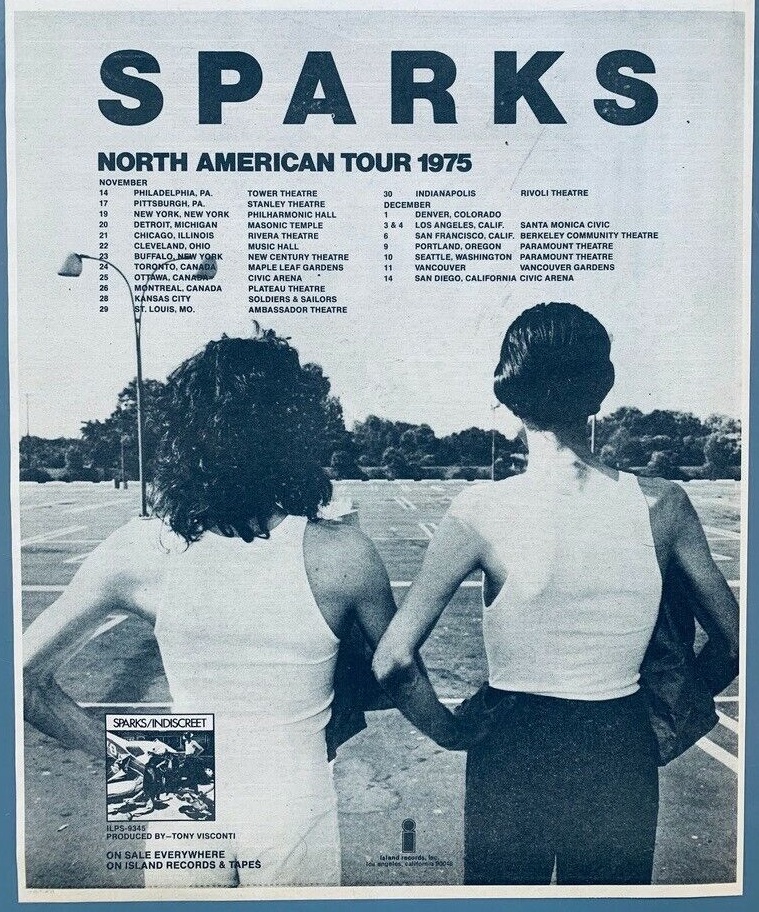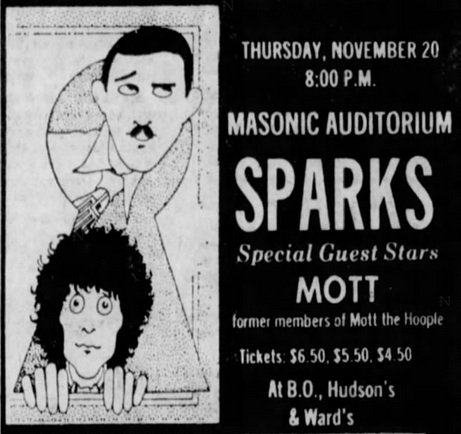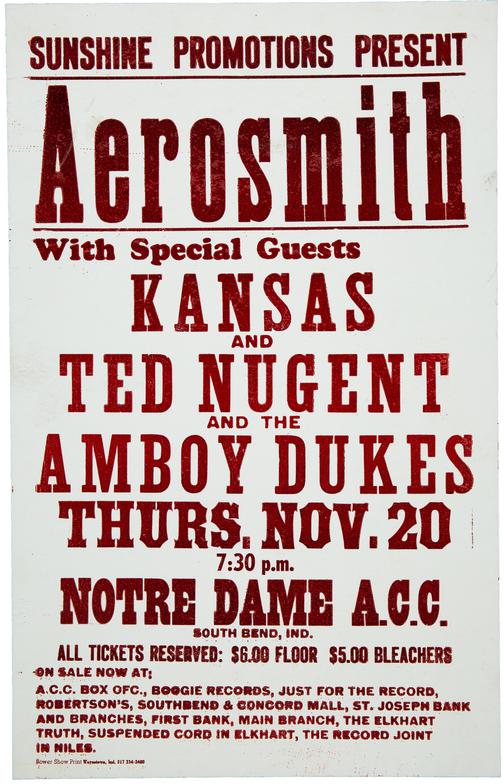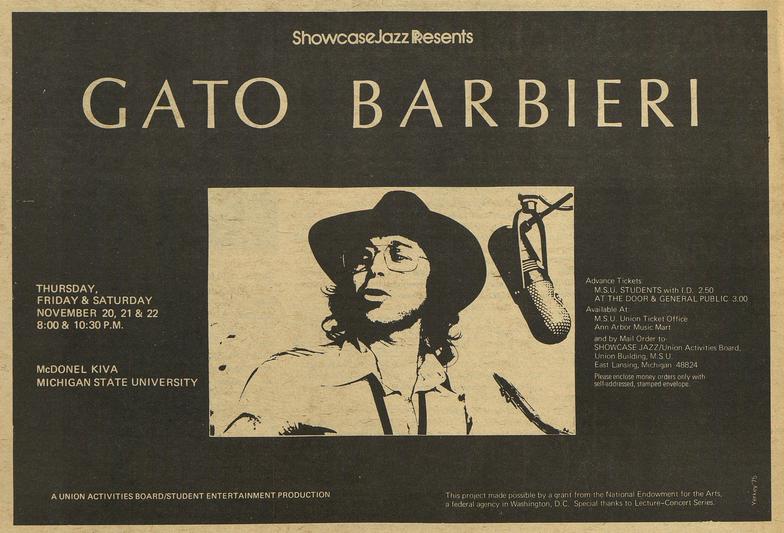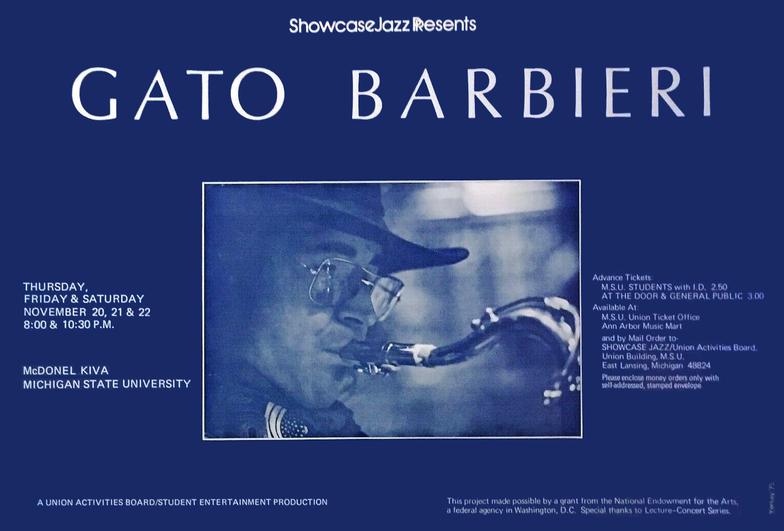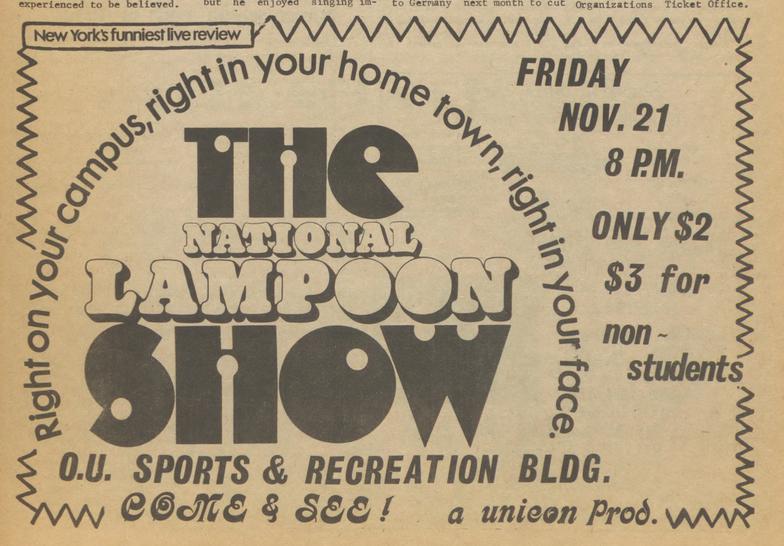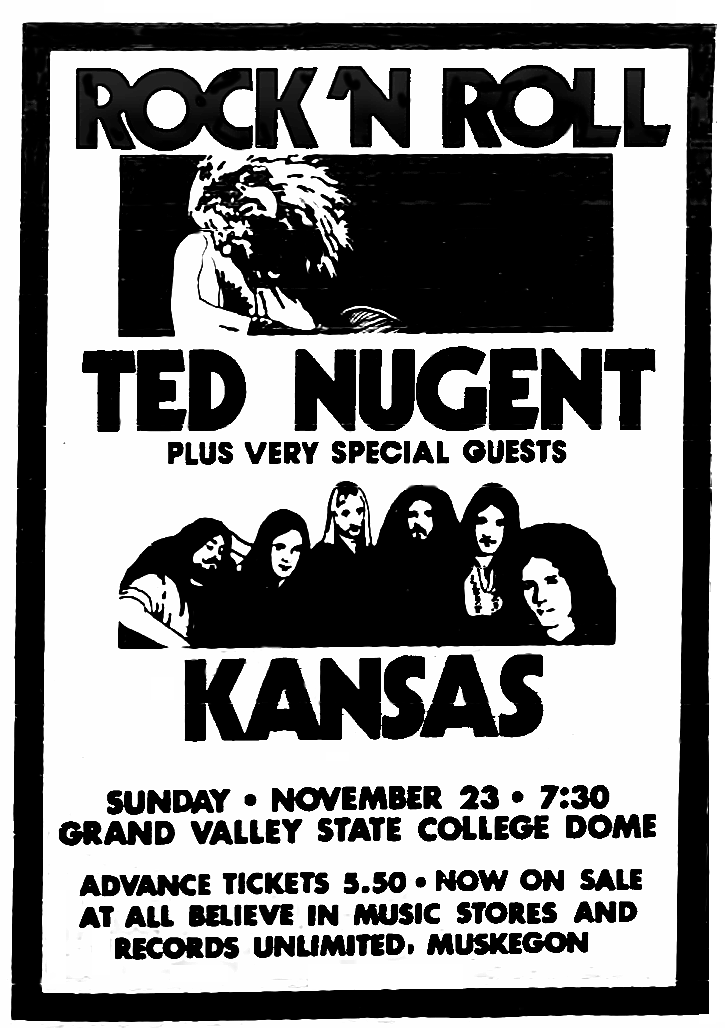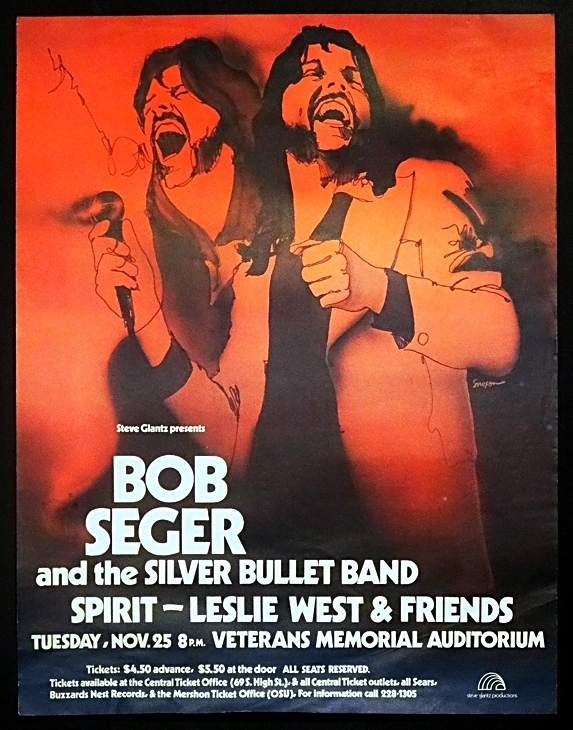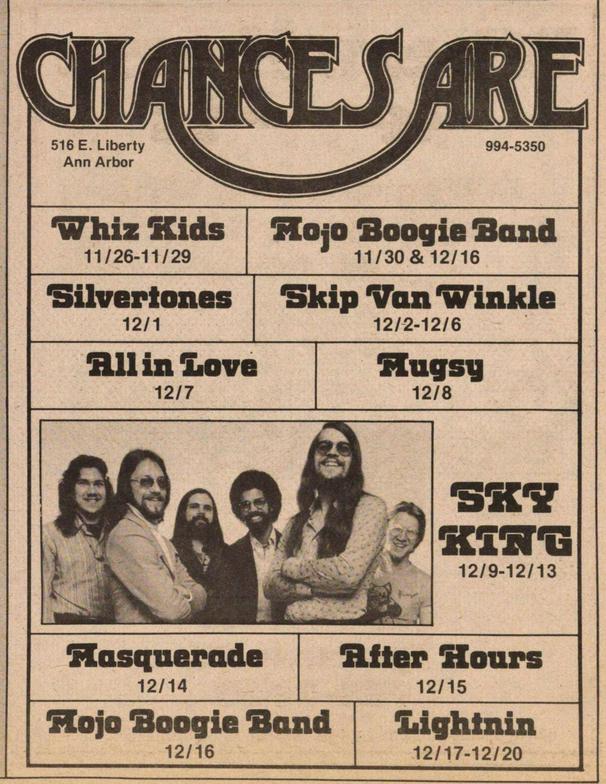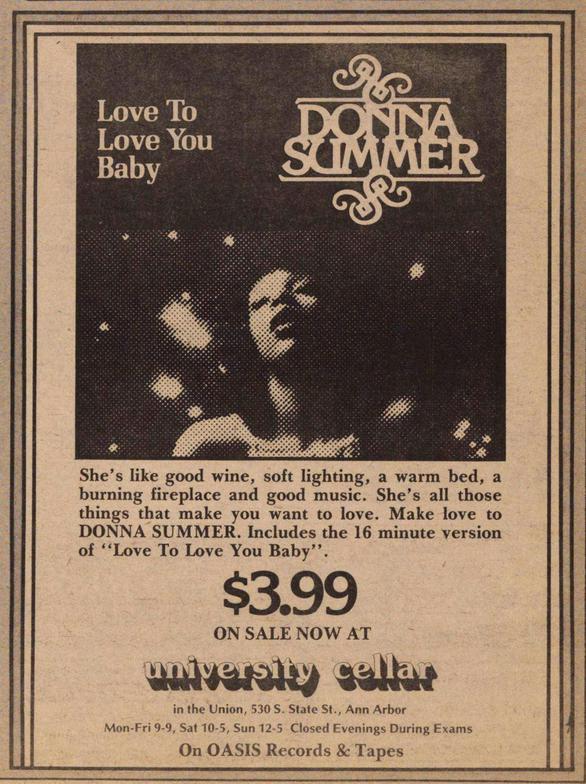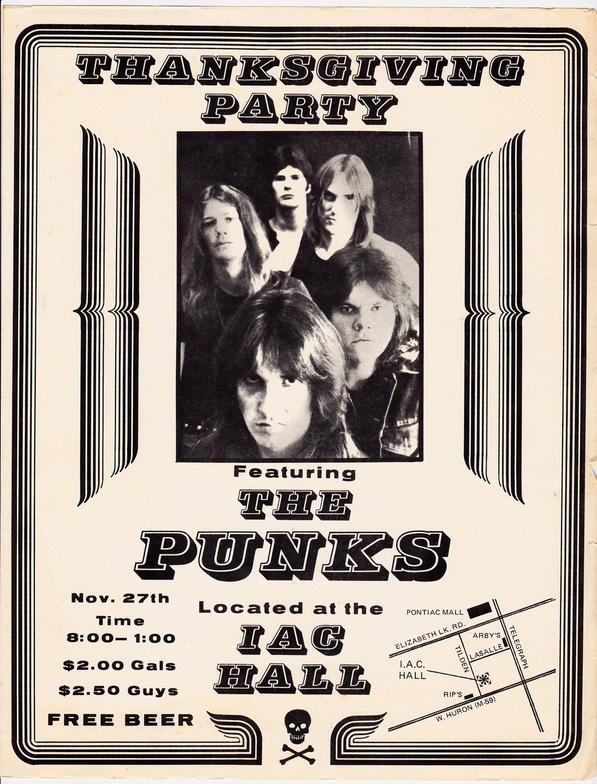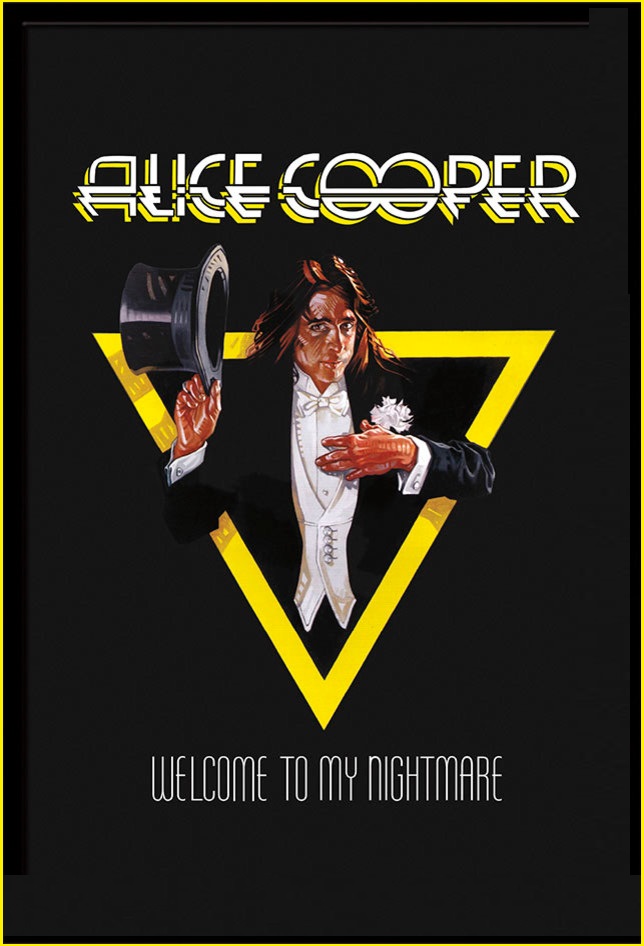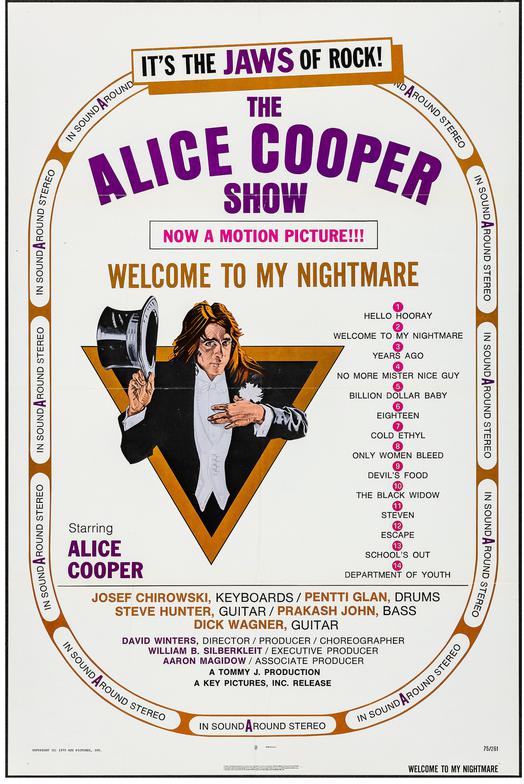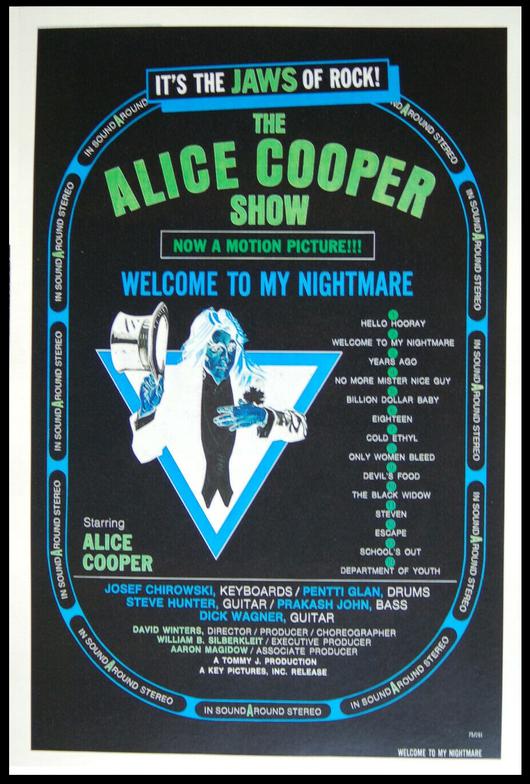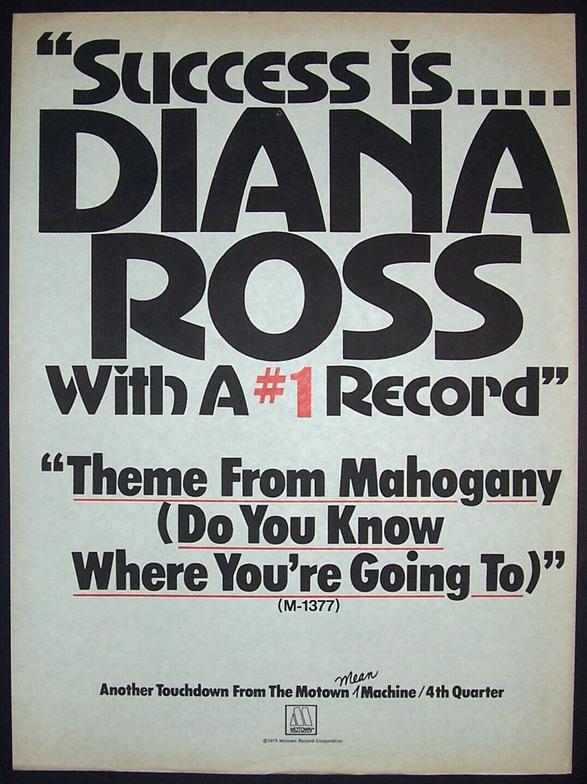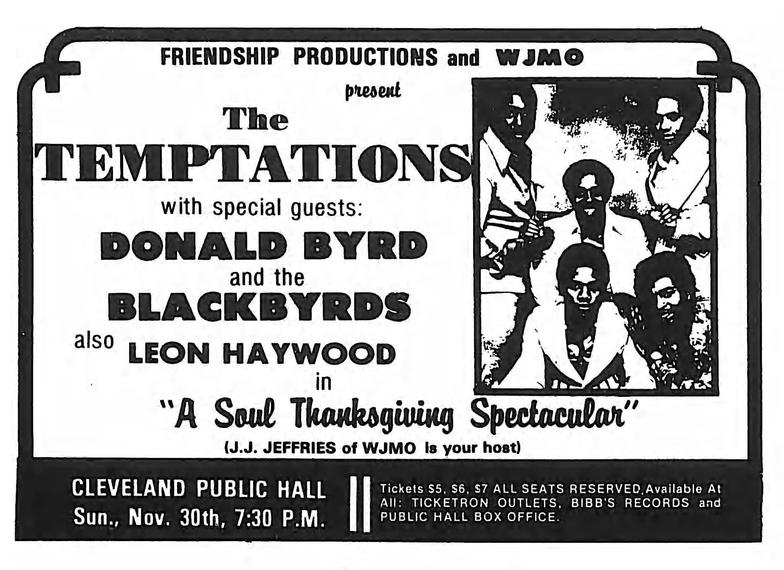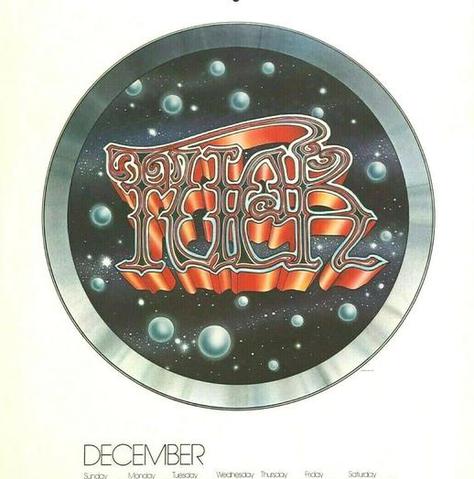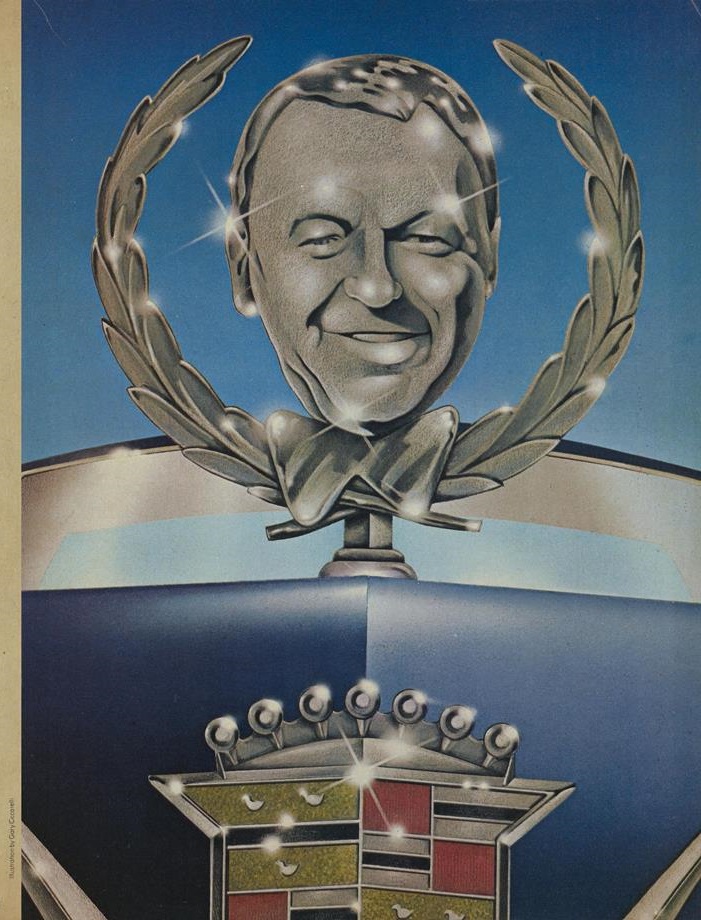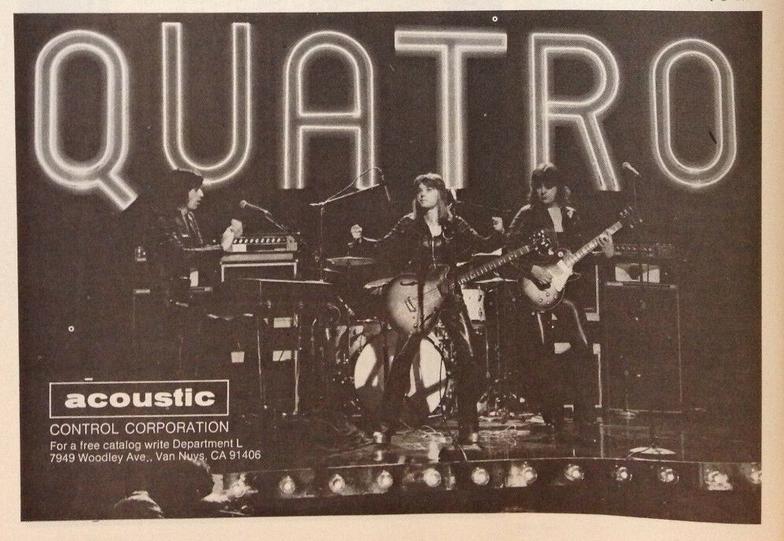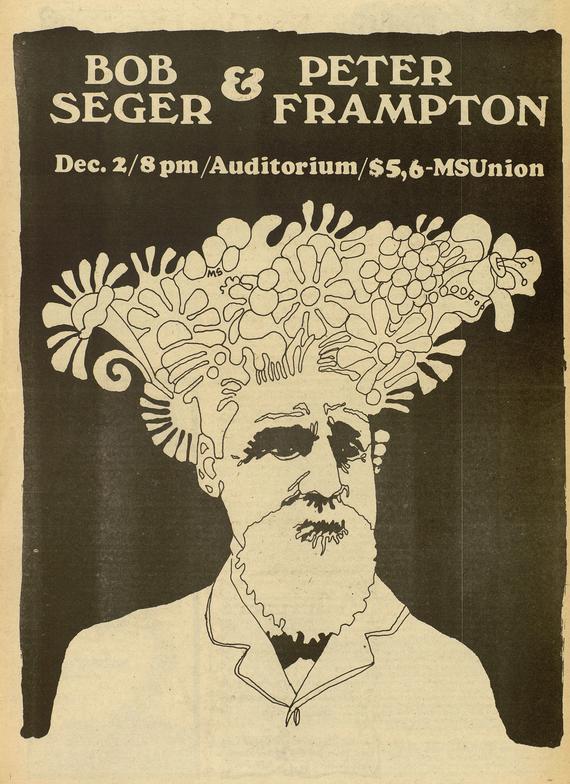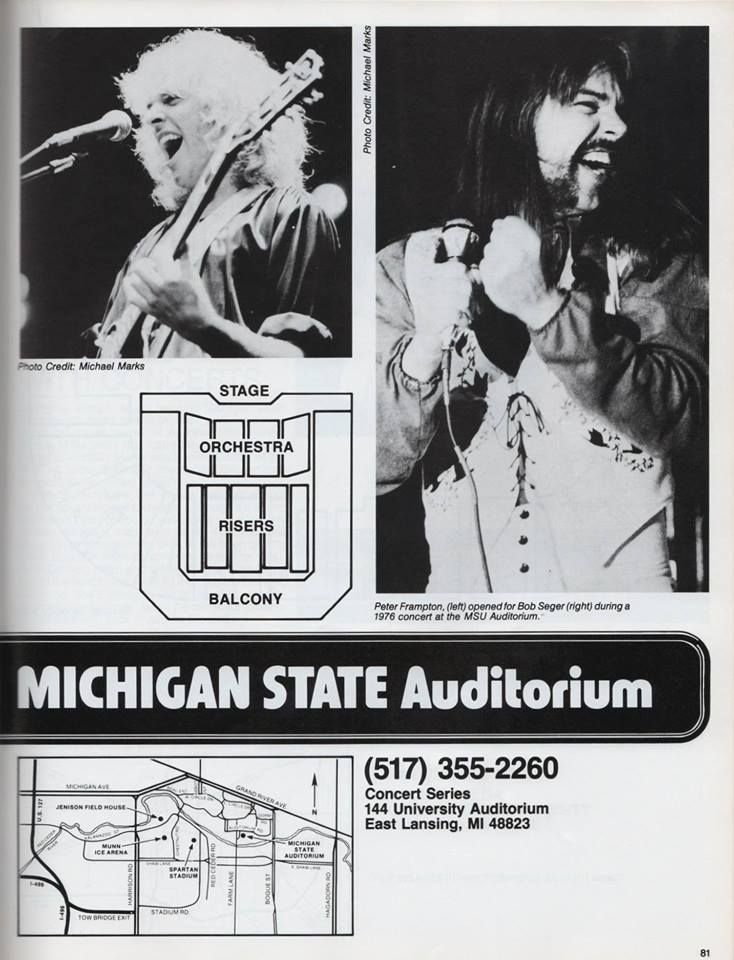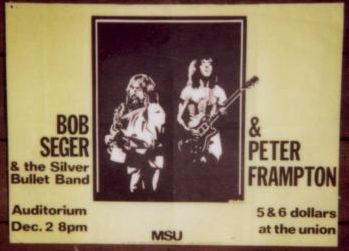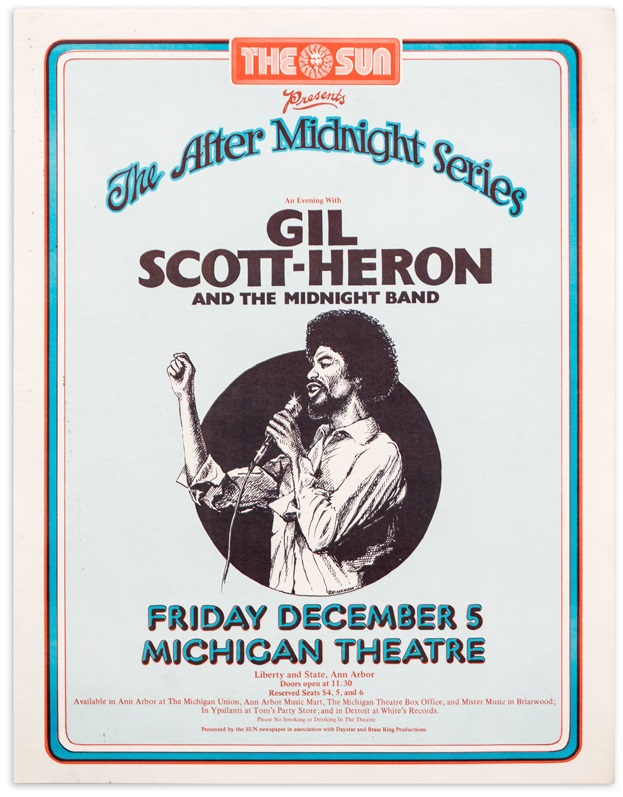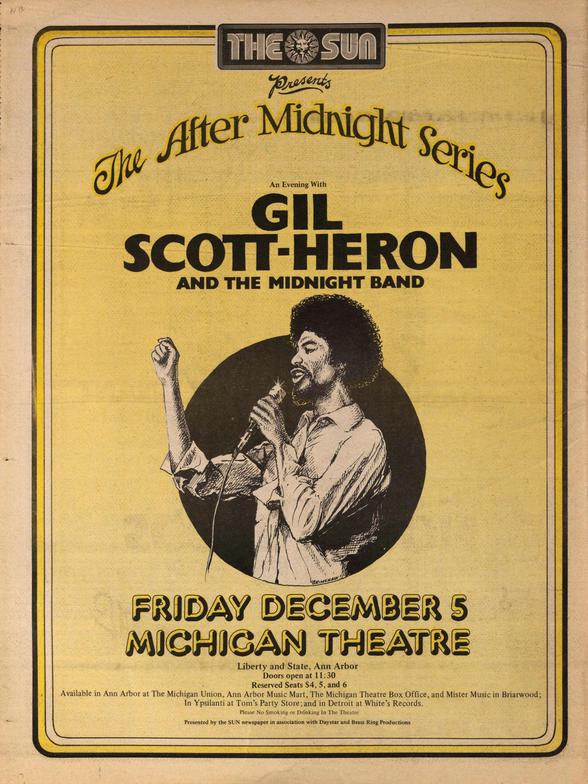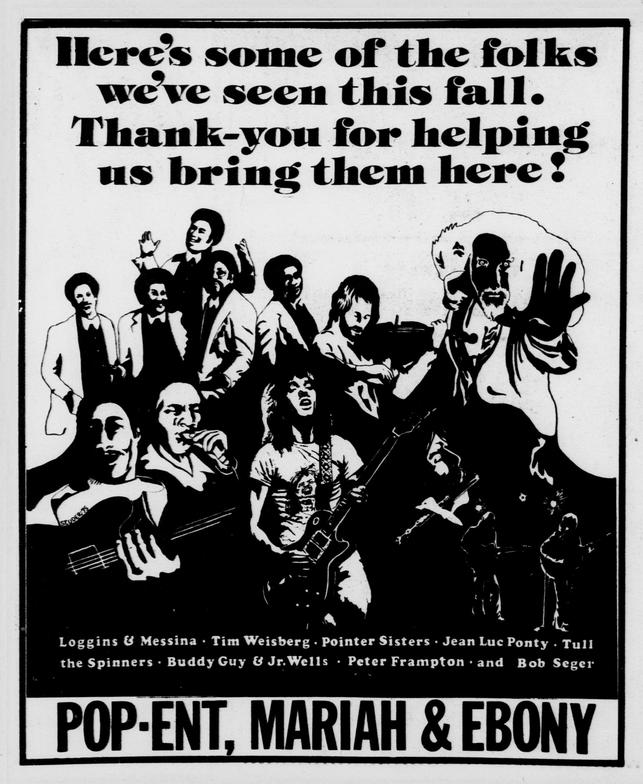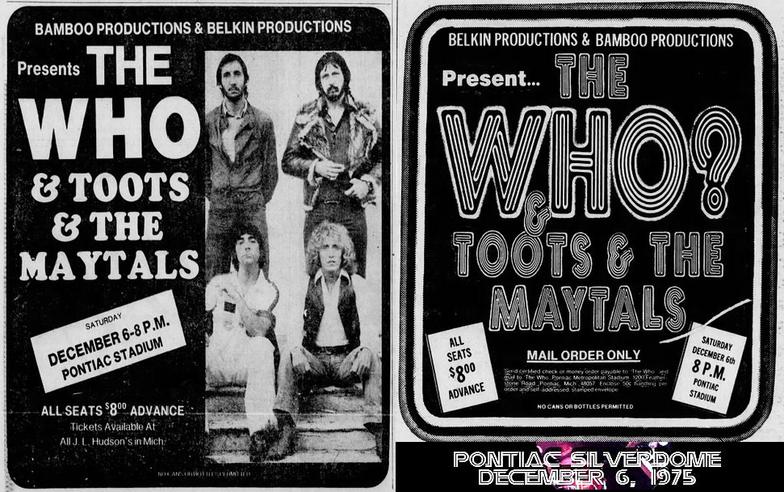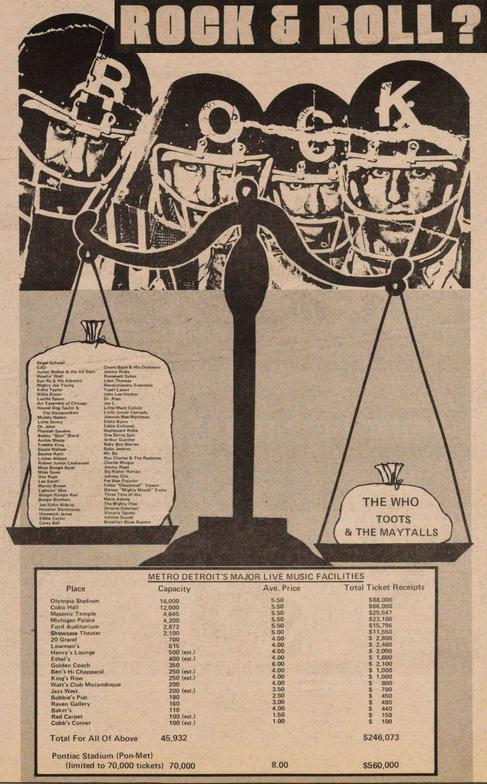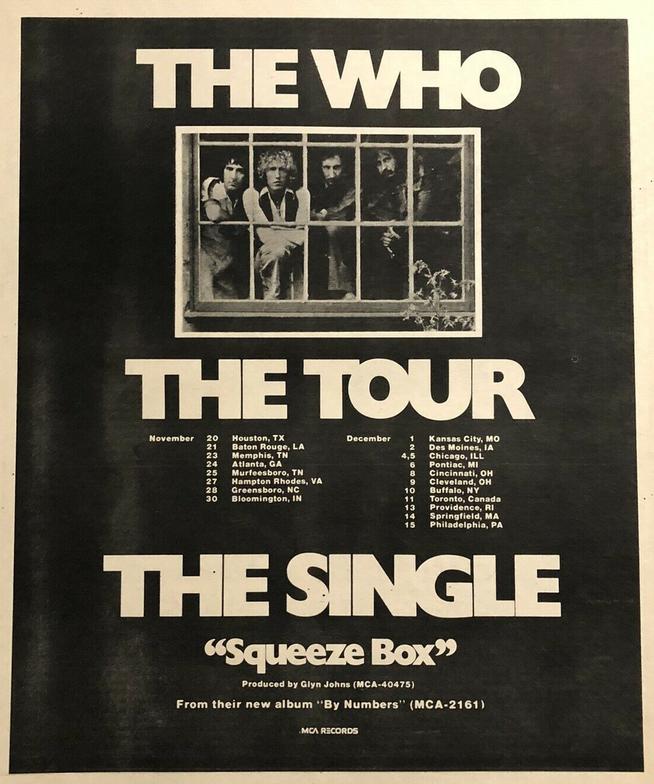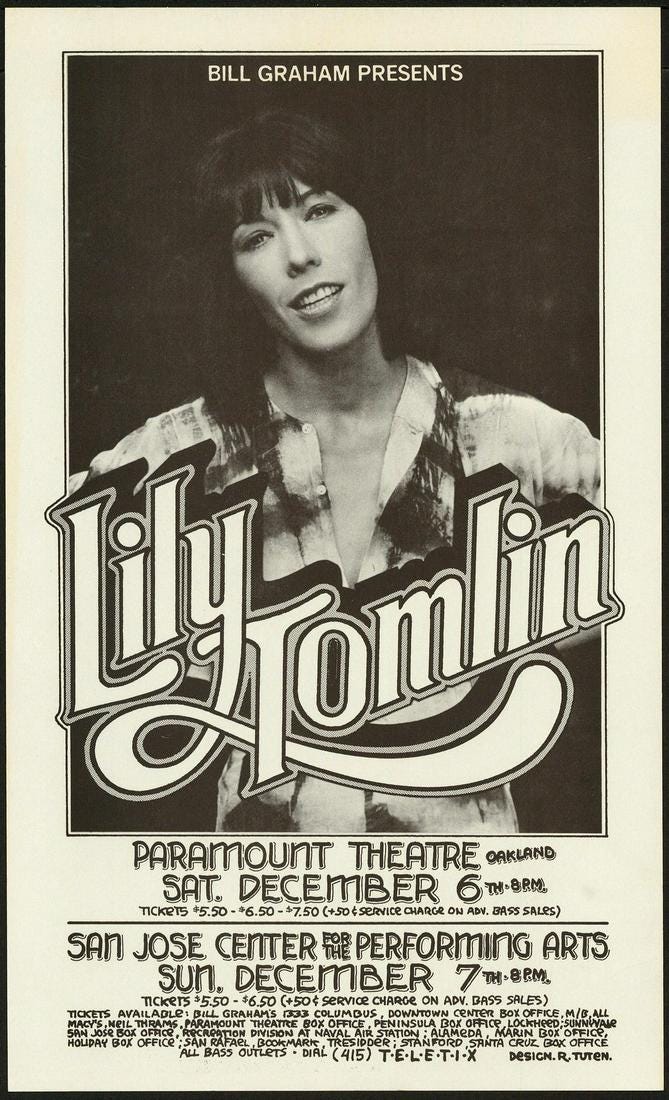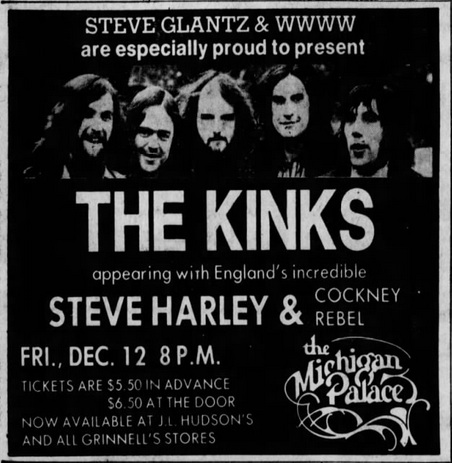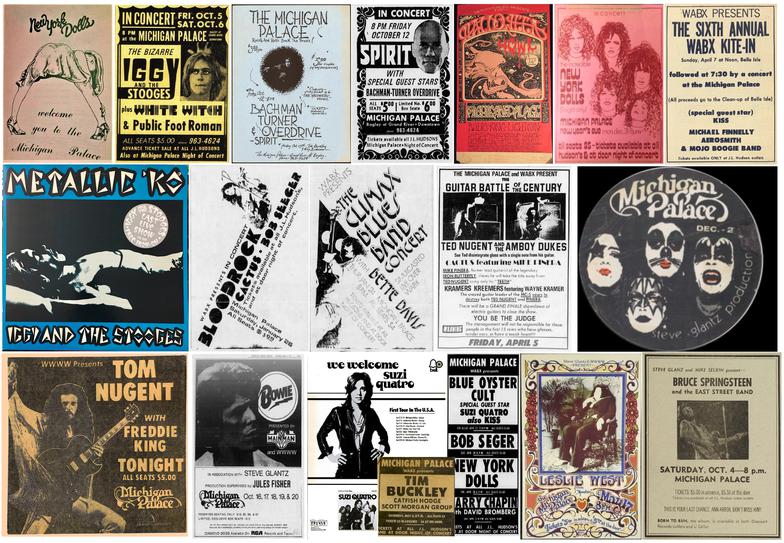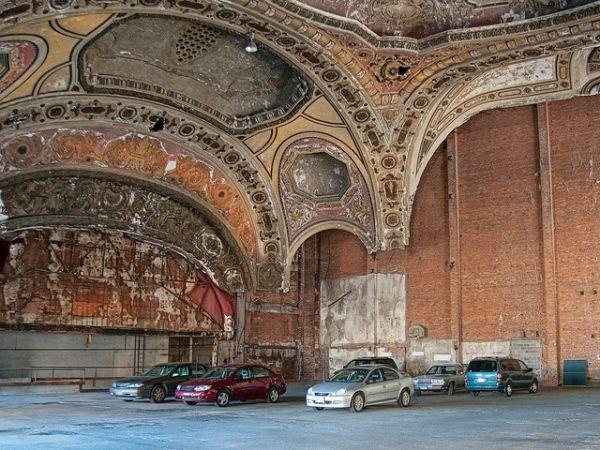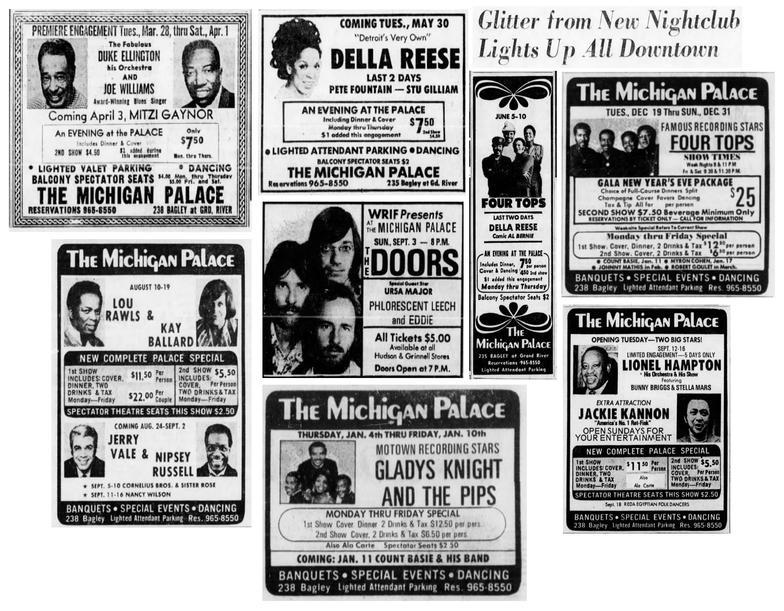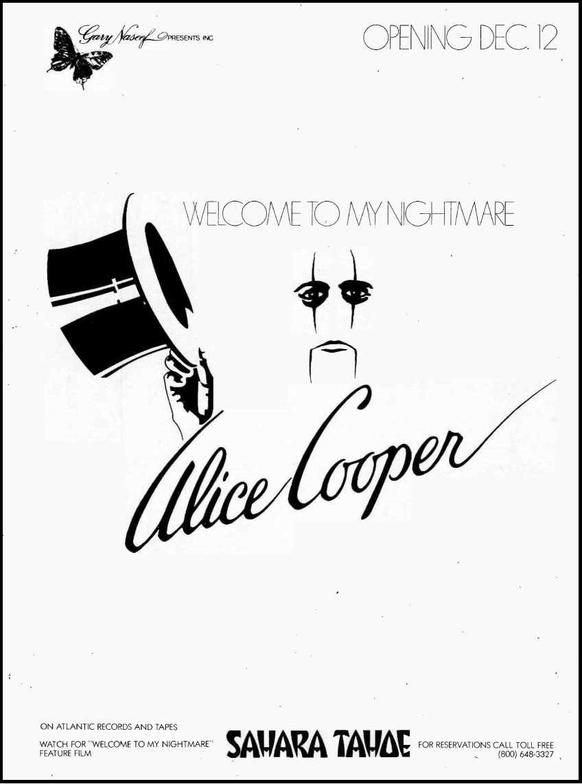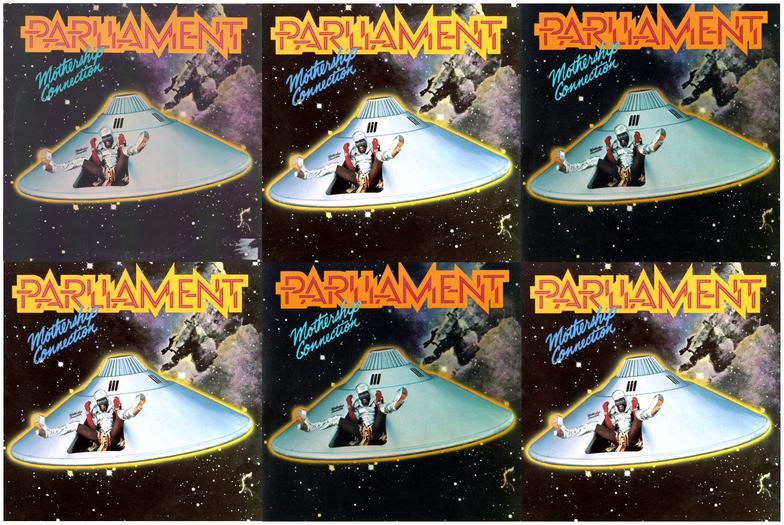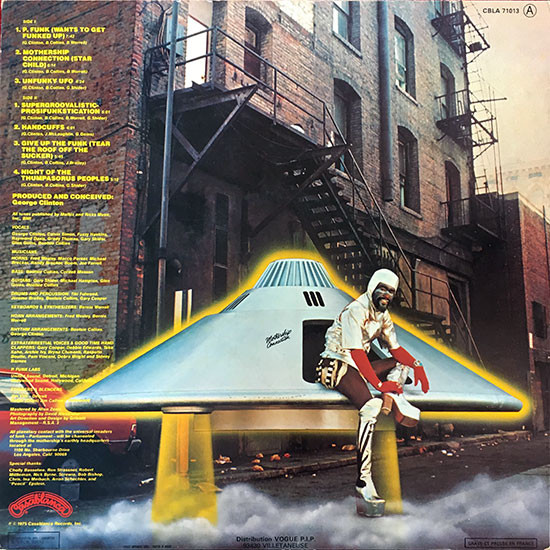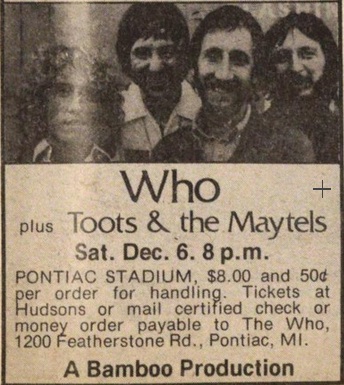Splatt Gallery
Double click here to add text.
Splatt Gallery's History of Michigan Concert Posters
Volume Eleven - 1975 - Page Twelve
***********************************************************
A full-page Blue Note Records ad in the November 15, 1975 issue of Billboard magazine for the album “Places and Spaces” by Donald Byrd, his fourth consecutive album produced by Larry Mizell.
Quoted from the introduction of the following video:
“The disco era was a challenge to many artists who had thrived in earlier musical settings, but some managed to move with the times without selling their soul or losing their identities. One such was the great jazz man Donald Byrd, who took his peerless trumpet playing onto the dancefloor with considerable success in the 1970s and early 1980s.
“On 15 November 1975, during his long tenure at Blue Note Records, he entered Billboard’s Hot Soul Singles chart with the highly danceable and elegantly orchestrated ‘Change (Makes You Wanna Hustle).’ Not for nothing did the label take out a trade advertisement that blared “DISCOver Donald Byrd!”
“Written by leading soul writer Larry Mizell, the track was the opening cut from Byrd’s new album of the time, 'Places and Spaces', which Mizell oversaw and which made its own soul LP chart debut a week later. The set continued the Detroit native’s hot streak, becoming his fourth consecutive title to make the R&B top ten.
“This Toppop recording with the Toppop dancers was first broadcast in 1976.”
Donald Byrd - Change (Makes You Want To Hustle) (1976)
https://www.youtube.com/watch?v=gcuhU_FdBAs
A full-page Tamla Motown Records ad in the November 15, 1975 issue of the British trade magazine Music Week for the Diana Ross film and soundtrack album “Mahogany”.
We should just let Rich Dorris tell us about this one, November 17, 1975.
Rich Dorris:
“My sister Ellen had (Gary) Grimshaw do the flyer. This is his impression of me in the Ozone Days. He signed it with the nickname I called him back in Rainbow Graphics “ The Chief”, after Jimmy Olsen’s name for his Boss, Perry White in the Superman Series. That’s how it was!!”
“I grabbed this poster on the way out and kept babbling, to the bemusement of my friends, ‘Norma fucking Bell! Can you believe it? Norma fucking Jean! That was Norma Jean Bell with the fucking Mothers of Invention!’”
Poster for Frank Zappa & the Mothers of Invention, pilfered from their show at Crisler Arena in Ann Arbor, Michigan on November 18, 1975. And yes, Zappa had added vocalist/saxophonist Norma Jean Bell, at the time one of our favorite artists to catch locally, with the Lyman Woodard Organization.
Bell only lasted about a month in Zappa’s band, some sources say that she joined on November 1, 1975, however she appears to have been part of the Halloween show in New York City. She accompanied the group to Yugoslavia immediately after the Ann Arbor show, and continued for about a dozen shows after that in the US and Canada until the end of the tour on December 9th.
In 2008, the Zappa Family Trust released the album “Joe’s Menage” which was a live concert recording of a show in Williamsburg, Virginia on November 1, 1975, the track below prominently features Norma Jean Bell on vocals and saxophone.
Frank Zappa & the Mothers of Invention – Chunga’s Revenge (live 11/1/75)
https://www.youtube.com/watch?v=37sFgSoVsig
A collection of ads for Frank Zappa & the Mothers of Invention with Larry Coryell at Crisler Arena in Ann Arbor, Michigan on November 18, 1975.
A pair of ads for Frank Zappa & the Mothers of Invention at Crisler Arena in Ann Arbor, Michigan on November 18, 1975, with a photo from the show.
Poster/ad by an unknown artist for “a creative profile” of Harold McKinney, the pianist with Tribe, at Oakland University in Rochester, Michigan on November 19, 1975. Here is his 1974 album, which was included as a choice for a premium with a subscription to the Ann Arbor SUN newspaper as seen earlier.
Harold McKinney – Voices & Rhythms Of The Creative Profile (album) (1974)
https://www.youtube.com/watch?v=MTxPtVIkwNw
Nothing new in the animosity towards the cities and fear-mongering of suburbanites by a Republican administration. Ken Cockrel writes in the November 19, 1975 edition of the SUN newspaper, “The resolve of the Nixon-Ford administration to write off the cities as bastions of bedraggled welfare cheats, endlessly siphoning off the fruits of the endeavors of the more solid middle-class citizens, is evident everywhere. We have watched the National administration go from “benign neglect” of the nation’s cities to a posture as regards New York City that was aptly described in a recent edition of the New York Daily News – the front page headline read “Ford to New York: ‘DROP DEAD’!”
A feature story on the history and current state of the Detroit concert scene, written by Frank Bach in the November 19, 1975 edition of the SUN newspaper, included a picture of Gary Grimshaw’s poster for the opening night of the Grande Ballroom in October 1966. We multiplied it.
A full-page ad for WWWW 106 FM radio in Detroit, Michigan, also known as W4, advertising a new program on Sunday nights called “Club 106 Disco” sponsored in part by the Poison Apple club, as published in the November 19, 1975 edition of the SUN newspaper.
Nearly every issue of the SUN newspaper for many months carried an ad for books and records by Sun Ra. Maybe it was the name similarity.
The cover of the November 20, 1975 edition of The Lansing Star newspaper in East Lansing, Michigan.
A full-page Island Records ad for the Sparks North American Tour, with a show at the Masonic Auditorium in Detroit, Michigan on November 20, 1975.
Newspaper ad for the Sparks at the Masonic Auditorium in Detroit, Michigan on November 20, 1975.
Poster by Power Show Print with Ted Nugent & the Amboy Dukes opening for Kansas and Areosmith in South Bend, Indiana on November 20, 1975.
Poster/ad by Jeff Yerkey for Gato Barbieri at Michigan State University in East Lansing, Michigan, November 20-22, 1975.
This ad is actually improved artistically by the addition of the “Cancelled” banner, although we are sorry that Gato Barbieri was too ill to make these scheduled shows at Michigan State University in East Lansing, Michigan, November 20-22, 1975.
A second poster by Jeff Yerkey for Gato Barbieri at Michigan State University in East Lansing, Michigan, November 20-22, 1975. The shows were unfortunately cancelled due to illness.
An ad for The National Lampoon Show at Oakland University in Rochester, Michigan on November 21, 1975. Some folks who attended this show have reported that the singer Meat Loaf was part of this show, and indeed, he was part of the cast as John Belushi’s understudy. It was through his association with the National Lampoon Show that Meat Loaf met vocalist Ellen Foley and began working with Jim Steinman.
Meat Loaf and Steinman struck up a working musical relationship and started composing a grandiose rock opera. The pair spent nearly two-and-a-half years, auditioning “Bat Out of Hell” and continually being rejected. We will pick this story up again in late 1977, when they finally find a record company willing to release the album, a record that will become one of the best-selling albums of all time.
Poster/ad for Ted Nugent with Kansas at the Grand Valley State Colleges in Allendale, Michigan on November 23, 1975.
A great poster by Snoxon for Bob Seger and the Silver Bullet Band appearing with Spirit and Leslie West & Friends at Veterans Memorial Auditorium in Columbus, Ohio on November 25, 1975.
The show schedule for Chances Are in Ann Arbor, Michigan, starting with the Whiz Kids on November 26, 1975, and running through December 20th, with the Mojo Boogie Band, Silvertones, Skip Van Winkle, All In Love, Mugsy, Sky King, Masquerade, After Hours, and Lightnin’.
A record store ad for the Donna Summer album “Love to Love You Baby”.
Born LaDonna Adrian Gaines in Boston, Massachusetts, her pursuit of a singing career landed her in the Munich, Germany production of the musical “Hair”. She remained in Germany and Austria for the next five years, becoming fluent in the language, released a couple of singles as Donna Gaines, and married Austrian actor Helmuth Sommer.
In 1974, she began working with producer Giorgio Moroder and released an album as Donna Summer, a printing error of her last name Sommer, but the name stuck. Together, Summer and Moroder wrote the song, "Love to Love You" and sent it to Casablanca Records president Neil Bogart, seeking an American release. Bogart played the song at one of his extravagant industry parties, where it was so popular with the crowd, they insisted that it be played over and over, each time it ended.
Bogart asked Moroder to produce a longer version for club play in the discos, and he returned with a 17-minute version. Bogart tweaked the title to "Love to Love You Baby", and Casablanca signed Summer, releasing the single on November 26, 1975.
Donna Summer – Love to Love You Baby (1975)
https://www.youtube.com/watch?v=oFrXXqq7QvQ
Poster/flyer for the Punks at the IAC Hall in Waterford Township, Michigan on Thanksgiving night, November 27, 1975 with “Free Beer”.
The feature film “The Alice Cooper Show Welcome to My Nightmare” was released on November 28, 1975.
Alice Cooper – Welcome to My Nightmare (movie) (1975)
https://www.youtube.com/watch?v=N2wZMNPUTvg
Another version of the poster for the “The Alice Cooper Show Welcome to My Nightmare” movie.
A full-page Motown Records ad in the November 29, 1975 issue of Billboard magazine for the single "Theme from Mahogany (Do You Know Where You're Going To)" by Diana Ross, her third #1 hit on the Billboard Hot 100 chart.
An ad for a “Soul Thanksgiving Spectacular” in Cleveland, Ohio on November 30, 1975 with the Temptations and Donald Byrd. Coincidentally, Byrd’s latest album “Places and Spaces” included a rendition of the Temptations’ 1971 hit “Just My Imagination (Running Away with Me)”.
Donald Byrd - Just My Imagination (Running Away with Me) (1975)
https://www.youtube.com/watch?v=3zOGlr3Tdns
The December 1975 page from Stanley Mouse’s 1975 Monster calendar.
Full-page illustration by Gary Ciccarelli in the December 1975 issue of CREEM magazine that accompanied a story about Frank Sinatra’s recent appearance at the Pine Knob Music Theater in Clarkston, Michigan.
An ad for “acoustic” amplifiers featuring Suzi Quatro, circa December 1975.
Poster for Bob Seger and Peter Frampton at Michigan State University in East Lansing on December 2, 1975, which uses cropped artwork by Robert Lockart from the back cover of Seger’s first album. Interestingly, both Seger and Frampton will have their break-throughs in 1976, both with live albums.
Program ad for Bob Seger and Peter Frampton at Michigan State University in East Lansing on December 2, 1975.
A second poster/ad for Bob Seger and Peter Frampton at Michigan State University in East Lansing on December 2, 1975.
Poster by Gary Grimshaw for Gil Scott-Heron at the Michigan Theatre in Ann Arbor, Michigan on December 5, 1975.
Newsprint version of the poster by Gary Grimshaw for Gil Scott-Heron at the Michigan Theatre in Ann Arbor, Michigan on December 5, 1975.
An ad from Pop Entertainment in East Lansing, Michigan in the December 5, 1975 edition of the State News newspaper, the final issue before the Christmas break.
On December 6, 1975, the newly constructed Silverdome stadium in Pontiac, Michigan, built to be the largest stadium in the NFL and the home of the Detroit Lions football team, presented its first concert with The Who and Toots & the Maytals. The audience of 75,962 set the record for the largest indoor attendance for a single concert, at the time.
The concert was video recorded, but for some reason only the second half of the concert became readily available, linked below:
The Who – Live at the Pontiac Silverdome (12/6/75)
https://www.youtube.com/watch?v=5bwPsEuGqx0
The graphic in a story by Frank Bach in the SUN newspaper that compared the single-show take from The Who at the Pontiac Silverdome compared to the capacity of all of the other Detroit venues combined.
A full-page MCA Records ad for The Who on tour, with the show at the Pontiac Silverdome on December 6, 1975.
Poster by Randy Tuten for Detroit’s own Lily Tomlin in Oakland, California on December 6, 1975.
Newspaper ad for The Kinks at the Michigan Palace in Detroit on December 12, 1975. Incredibly, this was the final show at the Michigan Palace, a rather abrupt ending.
The SUN newspaper had reported in their November 19th issue that owner Dr. Leo Speer was about to evict promoter Steve Glantz for non-payment of rent. Since January of 1974, Speer had gotten out of the promotion side of the Palace and had set up a rental agreement with Glanz as simply a tenant.
In addition to being late on the rent, the SUN reported that Speer was generally “upset” in his dealings with Glantz, and the final straw must have been the estimated $175,000 worth of damage to the building following this Kinks show. The Detroit Free Press reported, “smashed mirrors and statues, missing chairs, brass plating stripped from the walls, and trash strewn about”.
The paper also reported that Speer would take back the promotion side, “and plans to clean up the mess and produce ‘rock’ concerts there”, but obviously that did not happen.
Over the two years and seven months of the Michigan Palace’s tenure of the old Michigan Theater (which originally opened way back in 1926), there had been a total of 90 concerts, with numerous historical highlights, which we will fondly reminisce in the next few posts.
From September 1973 through December 1975, the Michigan Palace was the epicenter of Detroit rock and roll. The majestic Michigan Theatre had closed down in 1967, after 40 years as the Midwest’s most preeminent movie theater, for the next five years it avoided the fate of the wrecking ball by briefly re-opening and re-closing, until Sam Hadous re-vamped it into a ritzy supper club, opening in March 1972 with week-long appearance by Duke Ellington & his Orchestra.
The supper club period lasted for less than year despite a noble attempt, presenting over 60 shows with the likes of Lou Rawls, the Four Tops, Gladys Knight and Count Basie, who performed the last shows in January 1973.
The Plymouth, Michigan physician, Dr. Leo Speer, who owned the Rock & Roll Farm in Wayne took over the ownership of the Michigan Palace, intending to bring rock and roll shows to the venue. Someone suggested that he should open with a group from New York that was beginning to generate a buzz, called the New York Dolls.
The New York Dolls made their Michigan debut at the Michigan Palace on September 22, 1973 and they retuned there again for their next two Michigan shows, on New Year’s Eve 1973 and in May 1974. Speer asked the lead singer of the Dolls, David Johansen, if there were any other New York bands that would do that good at the Palace and Johansen told him to check out this band called KISS. KISS made their Michigan debut at the Michigan Palace on April 7, 1974 and they also retuned there again for their next two Michigan shows a week later.
Besides the New York Dolls and KISS, other acts that made their Michigan debuts at the Michigan Palace include Bachman-Turner Overdrive, Linda Ronstadt, Graham Central Station, Thin Lizzy, Leo Sayer, Harry Chapin, and a prototype Sonic’s Rendezvous Band, billed as the Scott Morgan Group, in May 1974.
During the supper club period, there was one oddly-placed show when the post-Morrison Doors, Flo & Eddie and Dick Wagner’s Ursa Major all made their first Michigan appearances at the Michigan Palace on September 3, 1972, booked in between Lou Rawls and Lionel Hampton.
Iggy & the Stooges performed their infamous final show at the Michigan Palace in February 1974. That show is documented by the album “Metallic K.O.”, the original release mixed this show with an earlier Stooges show at the Michigan Palace in October 1973, later releases provided the full shows from both nights. CREEM writer Lester Bangs wrote of the album, “Metallic K.O. is the only rock album I know where you can actually hear hurled beer bottles breaking against guitar strings”.
David Bowie stayed in town for a week during a six-night run at the Michigan Palace on his “Diamond Dogs” tour in October 1974. The opener each night was Mike Garson, a pianist who was Bowie’s longest and most frequent band member. They performed together for both Bowie's first and last concerts in the United States, and Garson performs on sixteen David Bowie albums, his solos on “Aladdin Sane” immediately come to mind.
The California band Spirit was the most frequent performer at the Michigan Palace, appearing seven times, KISS did six shows and Cactus did five. With four shows each, Blue Oyster Cult, Hawkwind and Bob Seger, formed part of the Michigan Palace’s “family of bands”.
As to why Dr. Leo Speer did not follow through with his plans to “clean up the mess” and keep the Michigan Palace rocking, his son Benny, of the band Benny & the Jets, and a tireless champion of the power of music, provides one insight:
“Part of the story also is that the Palace family of bands grew up... Kiss, Aerosmith, Seger, Nugent, Rush ... from 5,000 seats at the Palace, to 15,000 at Cobo, to over 50,000 at Silverdome.”
The Historic Detroit website describes what became the ultimate fate of the Michigan Palace:
“Tenants in the adjoining office building, including the Charge Card Association, needed secure parking, and were threatening to leave for another office building if something was not done. The theater, now in tremendous disrepair and silent, was considered a waste of space, and its owners looked at razing the theater for parking.
“But architectural studies showed that literally bringing the house down would jeopardize the soundness of the adjoining Michigan Building. The solution was one of the most unusual, albeit creative, fates to ever befall such a landmark: It would be carved into the state's only Italian Renaissance-style parking garage. Cherubs that had once flanked stars of stage and screen would now flank cars.
“In 1977, the building's owners paid $525,000 to gut the theater and build a three-level, 160-space parking deck inside it. The mezzanine and balcony were brought down, as was the grand staircase and one wall of the grand lobby. While walls were knocked out and beauty ravaged, much of the theater remains today. Its ticket booth, four-story lobby, proscenium arch, part of the upper balcony, and even the red curtain, all partially remain.
“Today, the sight of cars parked under grimy though still gorgeous plaster details draws tourists, photographers and gawkers in disbelief.
“In a twist that is as sad as it is ironic, the theater was built on the site of the small garage where Henry Ford built his first automobile, the quadricycle. The site of Ford Motor's birthplace replaced by a movie theater, reclaimed by the automobile.
“It truly is a story that could happen only in Detroit.”
A photo of the Michigan Palace as parking garage can be seen below:
A photo of the Michigan Palace as parking garage.
There was a lot of interest in our story about the end of the Michigan Palace so we’ve got a few more things we can post. Here is a collection of ads from the supper club period while under the ownership of Sam Hadous, from March 1972 through January 1973.
You can see how odd it was to have a show by The Doors on September 3, 1972, in the midst of the big band orchestras, the traditional pop singers and the Motown stars. Add in the spectacle of the Phlorescent Leech & Eddie, and the hard rock of Dick Wagner’s Ursa Major, and you can guess that it was quite a difference audience that night from the normal suit and gowns crowd.
The meteoric rise and fall of this short-lived period can be demonstrated by the media coverage, there were front-page headlines for the opening night, which was attended by dignitaries such as Detroit Mayor Roman Gibbs, the Police Commissioner, the Wayne County Sheriff, and “judges, local bankers and other wheels”, contrasted to the final shows by Count Basie that had no ads and barely a mention in local events calendars.
It had been an active period, however, with at least 63 shows in 42 weeks. The doors would remain closed for eight months until Dr. Leo Speer took over and presented Detroit with their first look at the New York Dolls. We would like to have seen the faces of Mayor Gribbs and the opening night “wheels” guests if they could have seen that.
For another show-biz landmark, Alice Cooper took a Vegas-like week-long residency at the Sahara Tahoe in Lake Tahoe, Nevada, December 12-18, 1975.
On December 15, 1975, from out of nowhere, and without warning, the Mothership Connection landed. Looking at the cover of the new album by Parliament and wondering aloud WTF? it was an other-worldly experience, the rare moment when genius trumps reality.
It was only the fourth album by Parliament and was a near-total departure (pun intended) from anything that had come before. Dropped the needle on Side One and hear, “Good Evening, Do not attempt to adjust your radio…” Holee shit, this is gonna be a wild ride.
The lead-off track brought a new genre of music to the planet Earth, “P-Funk”, a natural short-hand for Parliament-Funkadelic, but more than that as the grooves revealed that it was the “pure funk”, “uncut funk”, “the bomb”.
Parliament – P. Funk (Wants To Get Funked Up) (1975)
https://www.youtube.com/watch?v=KOiY2WcU9HQ&pp=QAA%3D
The back cover of the Parliament album “Mothership Connection” was even more surreal. These space brothers didn’t land at no Langley Air Force Base, or even Area 51, they descended into a back alley in the ‘hood, next to a car with its wheels up on blocks, there ain’t no tires to steal off a spaceship.
The second single “Give Up The Funk (Tear the Roof Off the Sucker)” was an anthem, an audience participation sing-along that most bands would die for. It was actually multiple anthems combined into one, “Ow we want the funk”, “Give up the funk”, “We gotta have that funk”, “We’re gonna turn this mother out”, “There’s a whole lot of rhythm going round”, “Tear the roof off the sucker”, and all the “La la la la” and “Doo doo doo”, anchored by Bootsy Collin’s fluid bass lines. It became Parliament's first certified million-selling single.
Parliament - Give Up The Funk (Tear the Roof Off the Sucker) (1975)
https://www.youtube.com/watch?v=od-5gCO_PGE
Volume Eleven - 1975 - continues - HERE


